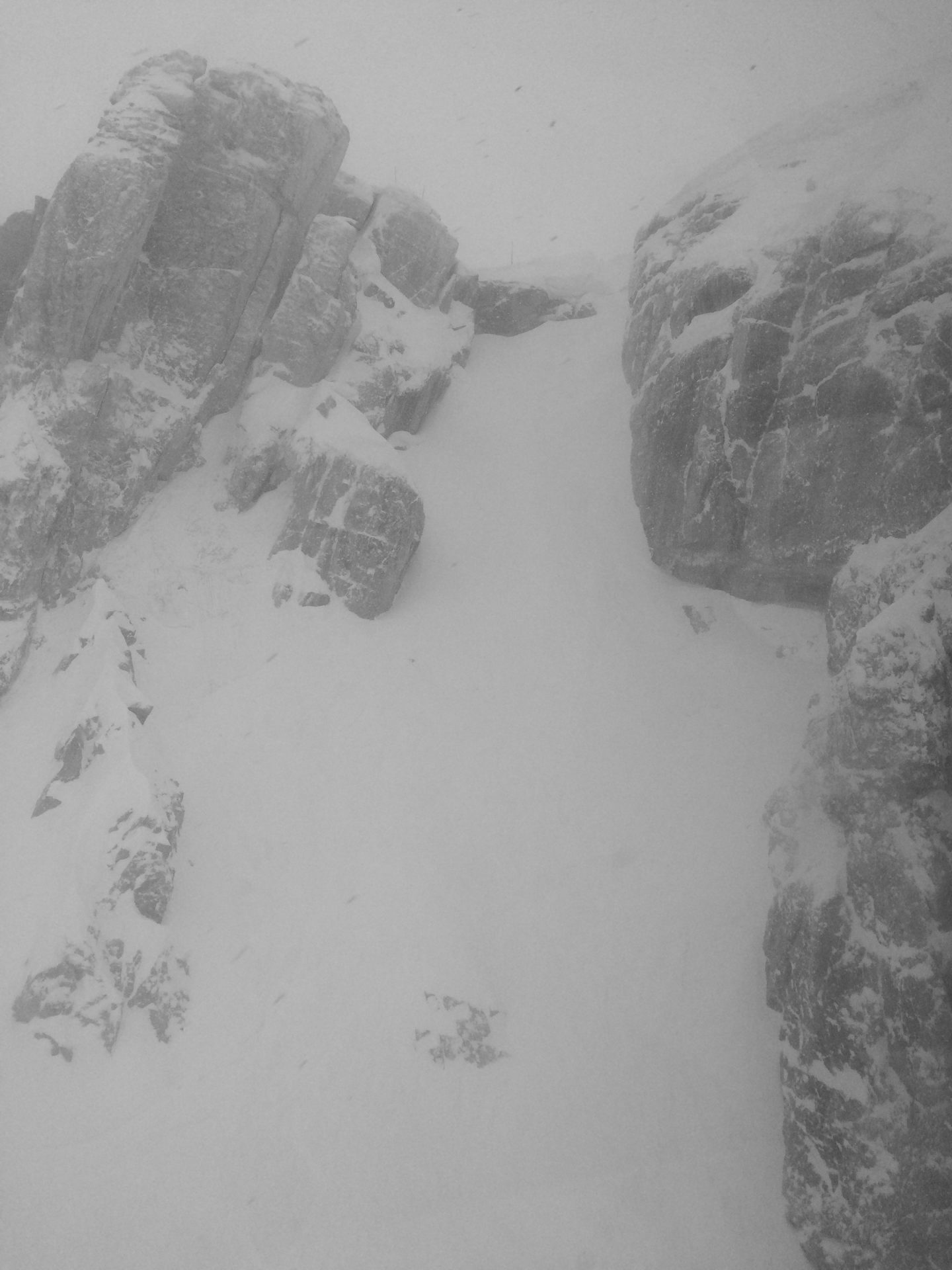Wind swept across Jackson Hole’s Rendezvous Bowl and delivered a barrage of stinging snow crystals to my cheeks. Corbet’s Couloir—perhaps the most famous inbounds ski run in North America—fell away precipitously beneath the tips of my skis.
My skiing wanderlust had latched onto resort test pieces like Corbet’s Couloir early on. Dreams of one day skiing chutes like Corbet’s helped propel me from the drumlins of Western New York to the steep skiing in Utah’s Wasatch Range and now, finally, to Corbet’s Couloir.

I had just watched a handful of skiers and snowboarders drop into the chute. One guy jumped straight in from the top. Two guys from New Jersey crashed down the chute like they were being flushed down a toilet. A few clever young snowboarders faced the steep headwall and used their boards to step down it like a ladder. They accomplished something, but I’m not sure it counted as snowboarding. The rest skied away; I was alone. The next tram wouldn’t arrive for a few minutes.
I stared over the tips of my skis and down the chute. I tried to visualize my entrance. I tried to feel the acceleration from descending the nearly vertical headwall. I tried to sense the forces I would encounter as I executed the abrupt right turn necessary to avoid the rock wall that defined the chute’s left rampart.
But I couldn’t envision success. Instead, I imagined my crumpled body following my runaway skis around the corner and down the chute like a pinball. I expected having to hike up or down the chute to retrieve my skis, which would’ve popped off after failing to execute that mandatory right turn.
A new wave of revelers arrived from the tram. I stepped aside to allow them room to assess the risk and make their decisions. My hesitance had cost me the chance to drop in without an audience. I still lingered in hopes that a rush of confidence would finally push me to do it, but none arrived. I quietly backed away and headed to Rendezvous Bowl.
A wind-whipped whiteout arrived as I traversed toward the bowl, away from Corbet’s. The strong westerly wind slowed my progress and gave me a chill. I couldn’t see more than a few feet in front of me. I felt my way across the bowl, but I wasn’t exactly sure where I was.
I stopped to get my bearings and search for landmarks. The whiteout subsided a bit. A sign line following the slope straight downhill suddenly appeared. The visibility had improved slightly, and the sign line could lead the way down the vast, mostly treeless bowl. The conditions might not get any better than this, I thought. It’s time to go.
I released my skis downhill and immediately fell into a rhythm in creamy wind-buffed snow that was denser than powder but more forgiving. It was hero snow. Every turn from the top of the bowl to the bottom was effortless perfection—like gliding down on a magic carpet.
I stopped at the bottom of the bowl, laughed, and turned around to look up at my tracks. Another whiteout already obscured the view.
The joy from that run soon melted away when regret from my Corbet’s misfire began gnawing at me. I had failed to seize my opportunity to ski Corbet’s. I shrunk from the challenge. Surely this was poor form.
“I couldn’t pull the trigger on Corbet’s,” I admitted to my friend Steve in a text message sent from Jackson Hole’s parking lot.
I first met Steve when he hired me to work in Snowbird’s ticket office a dozen years earlier. He was a wiry Wisconsinite with a long face and a mop-top hairstyle now living in Bozeman. I had asked him to join me on this last-minute trip, but his twin daughters were his priority now.
Steve was the best skier I knew, and I knew he had skied Jackson Hole. Skiing with him was often intense, and it helped push my skiing beyond what I would have been capable of by myself.
My phone vibrated.
“Never done Corbet’s either,” he replied.